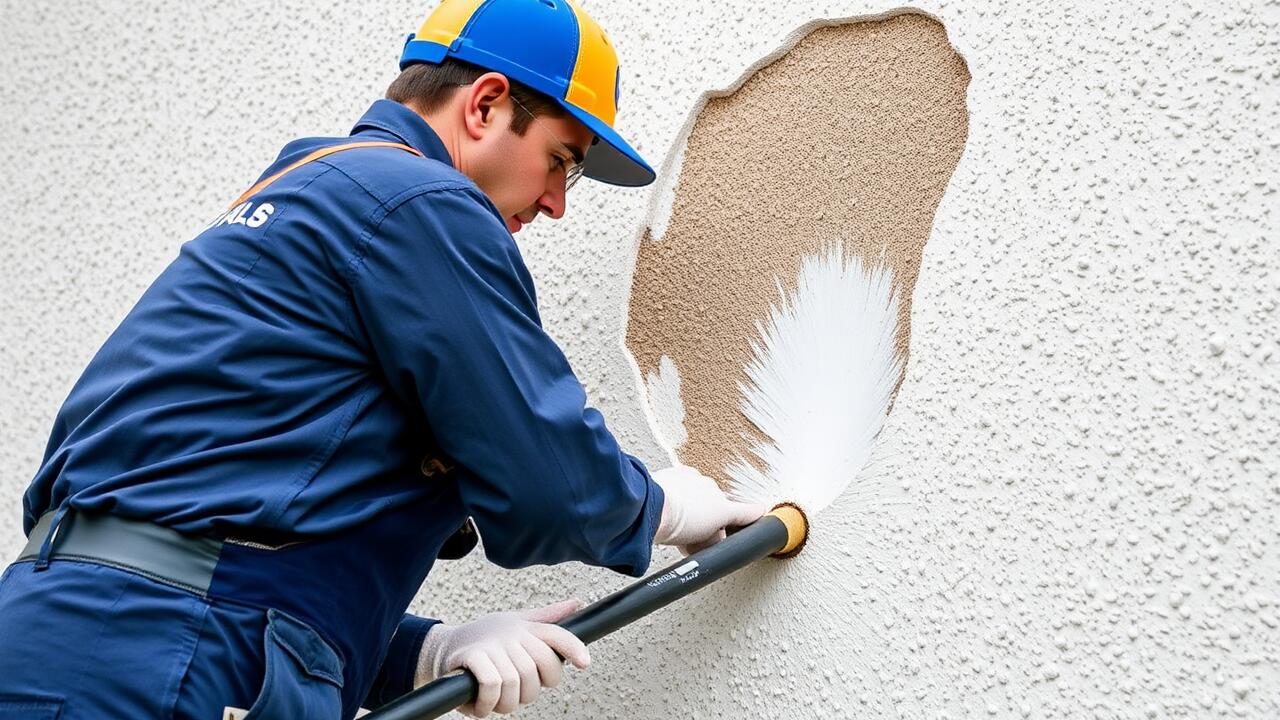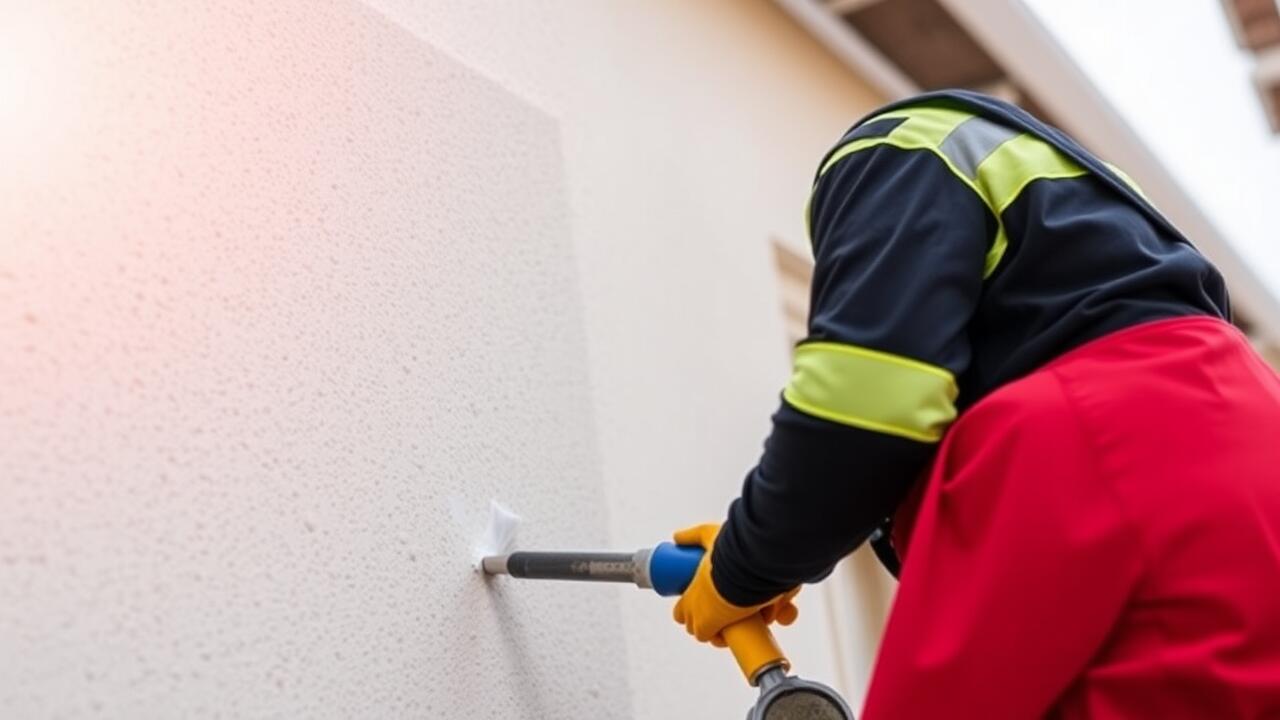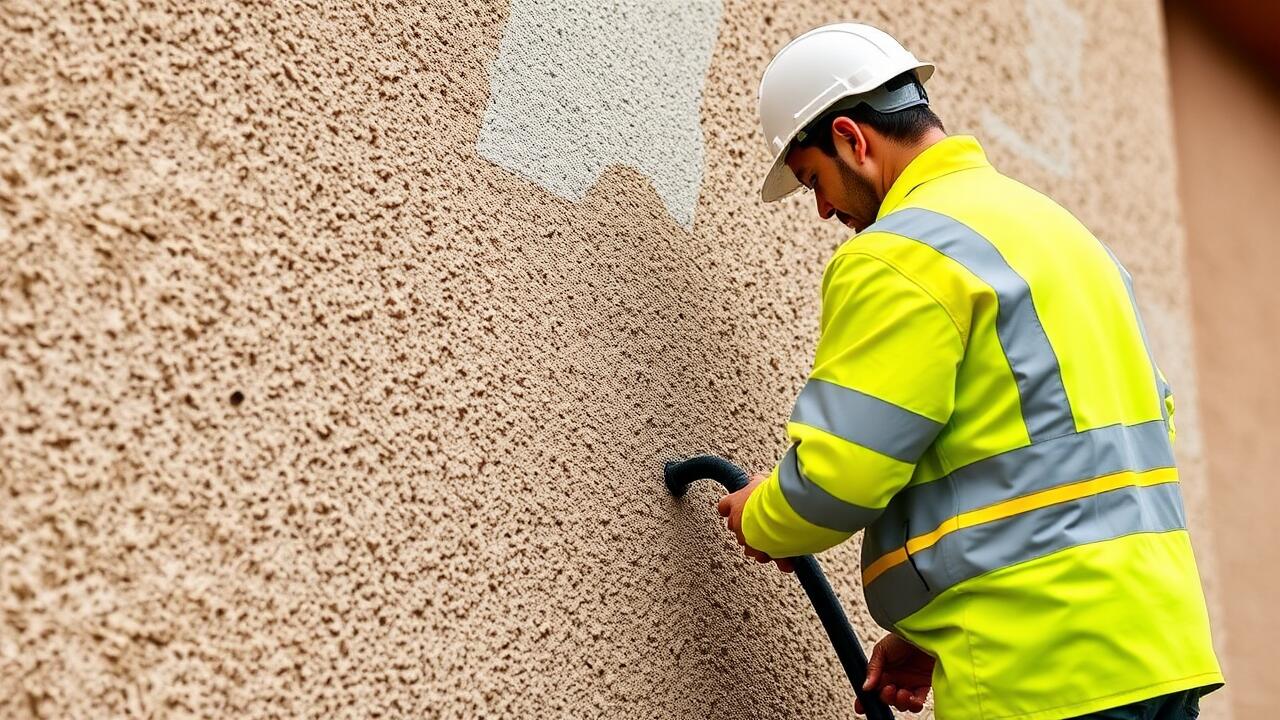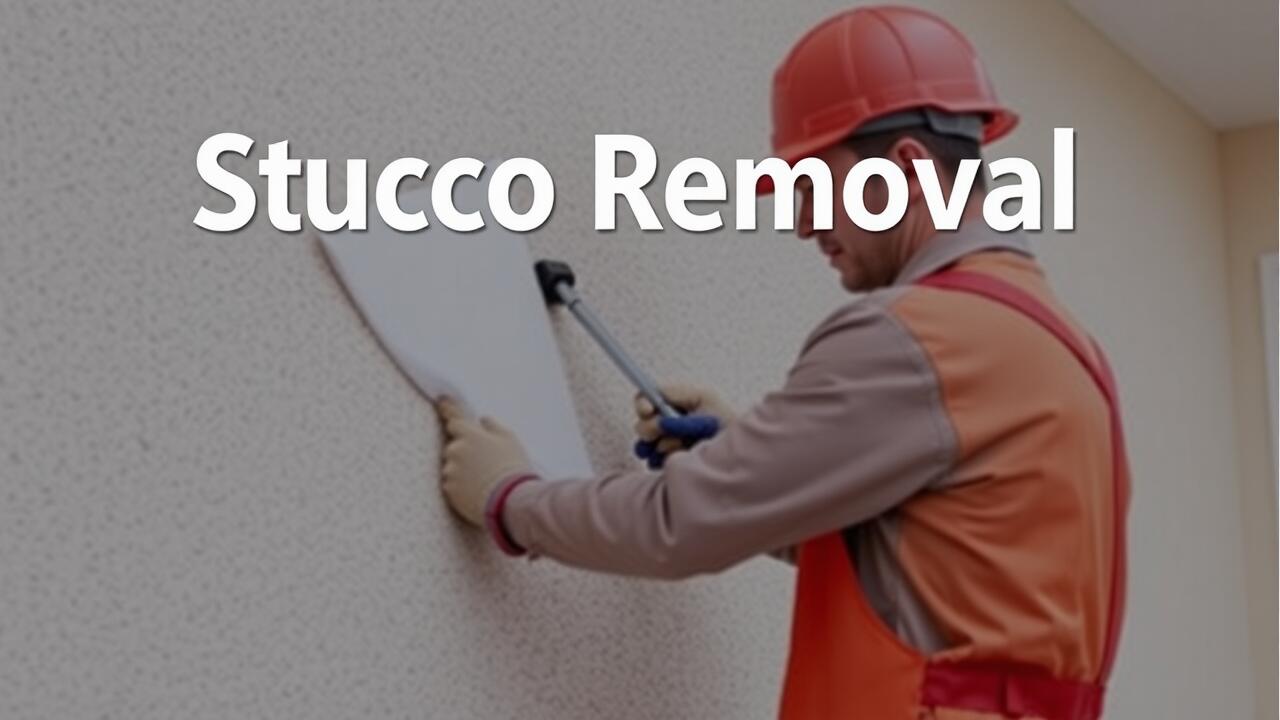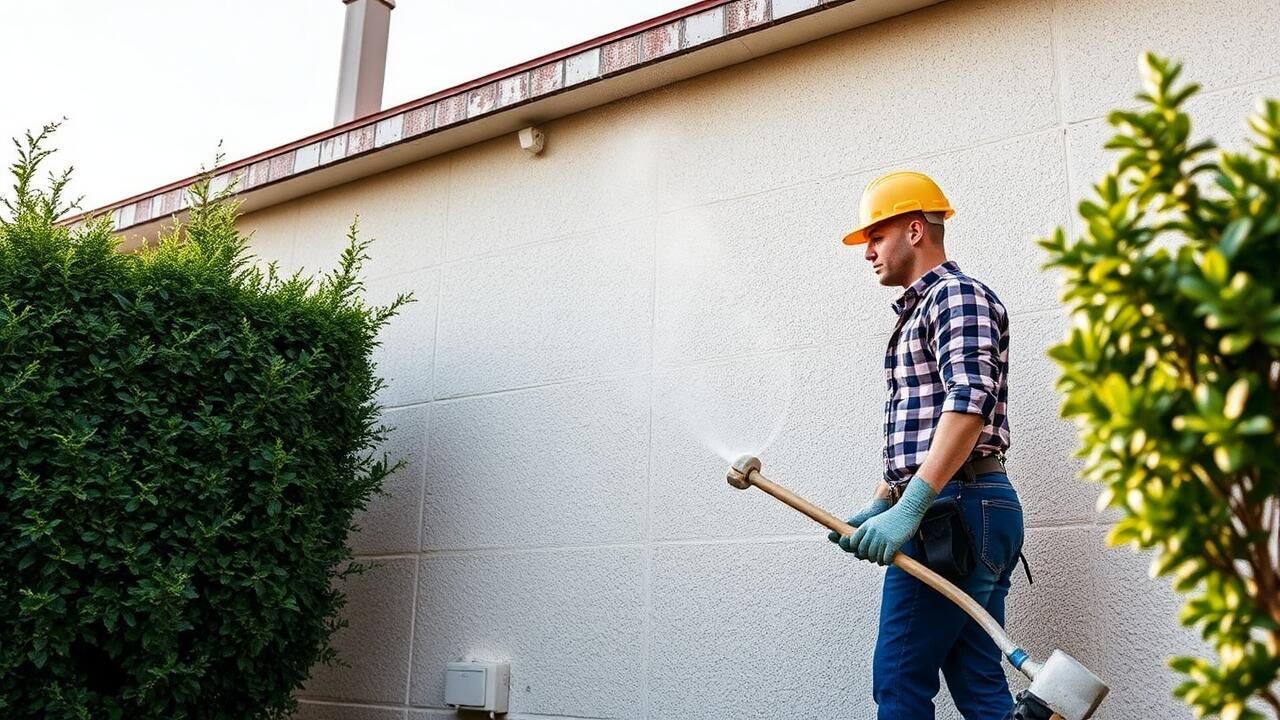
Techniques for Effective Removal
When using a sledgehammer for stucco removal, it is essential to approach the task with the right techniques to ensure efficiency and safety. Start by wearing proper protective gear, including goggles and gloves, to shield against flying debris. Position yourself at a comfortable angle, holding the sledgehammer with both hands. Focus on striking the stucco at an angle rather than directly perpendicular. This technique helps break apart the material more effectively, reducing the effort needed to remove larger sections. For those looking for professional assistance, Encino, Los Angeles Stucco Removal services can offer expert guidance and support.
Another useful technique is to work in manageable sections. Start at a corner or edge, using the sledgehammer to create a small crack in the stucco. Once there's an opening, continue applying force in a controlled manner. This method allows for better monitoring of how the stucco is breaking away, making it easier to adjust your strategy as you progress. Additionally, if the stucco proves challenging, consider using a pry bar in conjunction with the sledgehammer. This combination can help lift and remove stubborn pieces more efficiently, ensuring a cleaner removal process.
Proper Swinging Techniques with a Sledgehammer
To effectively use a sledgehammer for stucco removal, proper swinging techniques are crucial. Stand with your feet shoulder-width apart to maintain balance. Grip the handle firmly with both hands. Position the sledgehammer above your head, using your core and legs to generate power while keeping your arms straight. When swinging down, aim for a consistent and controlled motion to maximize impact without risking injury.
As you swing the hammer, focus on targeting specific areas of the stucco. Aiming for edges can help dislodge larger sections, simplifying the removal process. Adjust your stance and swing as needed, especially when addressing areas that may be more difficult, such as those on corners or near windows. Mastering these techniques will not only improve efficiency but also ensure a safer experience for projects like Encino, Los Angeles stucco removal.
Common Challenges Encountered
Removing stucco can present various challenges that can complicate the process, especially for those inexperienced with the technique. The material often adheres strongly to underlying surfaces, leading to situations where significant force is needed to loosen it. In areas like Sherman Oaks, Los Angeles, where older homes may feature thicker stucco layers, the removal can become especially labor-intensive. Navigating the plaster’s stiffness requires not only the right tools but also a certain level of skill to ensure the underlying structure remains undamaged.
Another common challenge involves dealing with debris. As stucco is removed, it breaks into large chunks and fine particles, creating a messy environment that can hinder progress. The dust and pieces scattered around the work area can pose safety risks and make cleanup daunting. In Sherman Oaks, Los Angeles, temperatures can exacerbate these challenges, especially during the heat of summer. Implementing proper protective measures and planning for efficient debris management are essential for maintaining a safe and organized workspace.
Dealing with Stubborn Stucco
Removing stubborn stucco can be a daunting task, especially if it has been applied over a long period. The underlying layers may adhere tightly to the wall, making it resistant to conventional removal techniques. In such cases, it’s essential to assess the type of stucco and its condition. Using the right tools, including a sledgehammer, can provide the necessary force to break apart the material. Focus on small, manageable areas to prevent overwhelming yourself and to maintain control over the removal process.
If the stucco proves particularly resistant, consider applying a stucco softener or a water soak method to loosen it. These approaches can help break down the bond between the stucco and the underlying surface. For those undertaking the project in Encino, Los Angeles, employing these tactics not only facilitates easier removal but also minimizes damage to the wall beneath. Patience and technique are key when dealing with stubborn stucco to ensure a clean and efficient removal process.
Post-Removal Cleanup
After the stucco has been removed, the cleanup process is essential to ensure the area is safe and ready for any subsequent work. Begin by gathering all large debris and disposing of it properly. This includes any pieces of stucco, broken tools, and protective gear used during the removal. A good practice is to use heavy-duty trash bags or containers to hold smaller fragments to prevent them from scattering around the worksite.
Dust and smaller particles can linger in the air after the removal. Vacuuming the area with a shop vac specifically designed for construction debris can help clear out these remnants. Wet cloths or mops can be used for final touches to capture any remaining dust particles and provide a thorough clean. For residents in the region, considering professional services like Encino, Los Angeles Stucco Removal might be beneficial for handling both the removal and cleanup efficiently.
Best Practices for Debris Management
After the stucco has been removed, efficient debris management is crucial for a successful project. Start by collecting large pieces of stucco and placing them into heavy-duty trash bags or bins. Using a dolly can facilitate transportation of heavier debris to a designated disposal area. Ensuring that all loose materials are gathered helps maintain a clean work environment and prevents accidents.
For those involved in Encino, Los Angeles stucco removal, it's essential to follow local regulations regarding debris disposal. Research appropriate disposal sites or recycling options for construction waste. This awareness not only contributes to environmental sustainability but also aligns with community standards. Utilizing containers labeled for different types of materials can simplify the process and promote responsible debris management.
FAQS
Is using a sledgehammer the best method for removing stucco?
Using a sledgehammer can be effective for stucco removal, especially for larger areas. However, it’s important to consider the type of stucco and the underlying structure to determine if this method is appropriate.
What safety gear should I wear while removing stucco with a sledgehammer?
It’s essential to wear safety goggles, a dust mask, gloves, and sturdy footwear to protect yourself from flying debris, dust, and potential injuries.
How do I deal with stubborn stucco that won’t come off easily?
For stubborn stucco, try scoring the surface with a utility knife or using a chisel to create weak points before applying the sledgehammer. This can help make the removal process easier.
What should I do with the debris after removing stucco?
Proper debris management involves collecting the broken stucco and disposing of it according to local regulations. Consider renting a dumpster or using large trash bags for easy cleanup.
Can I use a sledgehammer on other materials besides stucco?
Yes, a sledgehammer can be used on various materials such as drywall, brick, and concrete, but make sure to assess the situation to avoid damaging the underlying structure unnecessarily.
